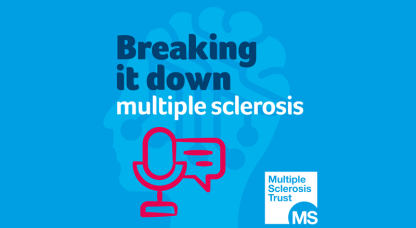This study looked at how common it was for someone with MS to use a catheter. Out of 9,676 participants, just over one in ten (11%) people reported using a catheter at the time of the survey and another one in seven (15%) had used a catheter in the past bring the total to one in four (26%) who had used a catheter at some time.
Some people had used more than one type of catheter. Amongst catheter users, four out of five (81%) had used intermittent self-catheterisation (ISC), two out of five (43%) had used an indwelling urinary catheter and about one in twelve (8%) had used a suprapubic catheter.
A third (32%) of men but only a quarter of women (24%) used a catheter and men were more likely to use indwelling methods than women.
People with MS who used a catheter had, in general, been diagnosed for longer, experienced more physical disability, more overactive bladder symptoms and a lower quality of life.
Bladder symptoms are common in MS. Different kinds of problems occur depending on where in the spinal cord or brain has been affected by the MS lesions. The bladder difficulties can be:
- urgency - a desperate urge to go to the toilet with little or no warning
- frequency - needing the toilet more than eight times a day
- hesitancy - difficulty in emptying the bladder
- retention - a feeling of incomplete bladder emptying
- Many people experience a combination of these.
There has been considerable research into bladder symptoms and, as a result, many problems can now be managed well. Depending on the nature of the problem, treatment can involve medication, bladder retraining, using a catheter or finding ways to control the impact on day to day life.
This research looked at how common it was for someone with MS to use a catheter. They come in three types.
Firstly, intermittent self-catheterisation (ISC), also known as short-term catheterisation, which is when you insert a thin tube into the bladder through the urethra, the tube that connects the bladder to the outside of the body. Urine is drawn off through the tube and then the catheter is removed. It is called 'intermittent' because the catheter is not permanently in place and "self" because the person usually does the process themselves. ISC normally takes place several times a day using disposable catheters.
There are two kinds of long term catheter: indwelling urinary catheters and suprapubic catheters. Indwelling urinary catheters are inserted into the bladder through the urethra but they have an inflatable balloon at the bladder end which keeps the catheter in the correct position. The outside end of the catheter is attached to a collection bag worn on the leg or may have a valve so that urine can be emptied straight into the toilet periodically.
Suprapubic catheters may be used if a long-term catheter is needed as a permanent solution to bladder problems. A suprapubic catheter is a tube that is passed through the abdominal wall directly into the bladder, bypassing the urethra. This insertion is a surgical procedure. The collection of urine is the same as for an indwelling catheter.
More information about catheters is available at the bottom of this page.
How this study was carried out
The responses of 9,676 people with MS on the NARCOMS (North American Research Committee on Multiple Sclerosis) registry in 2005 were analysed. Participants had completed questionnaires about bladder problems and physical disability, including the Urogenital Distress Inventory (UDI-6), the Short Form-12 (SF-12), the Patient Determined Disease Steps measure of physical disability, as well as giving a history of any bladder symptoms.
Three quarters (75%) of the study participants were women, almost all (93%) were ethnically white and it was an average of 30 years since they had been diagnosed with MS.
Just over one in ten (11%) people reported using a catheter at the time of the survey and another one in seven (15%) had used a catheter in the past bring the total to one in four (26%) who had used a catheter at some time.
Amongst catheter users, four out of five (81%) had used intermittent self-catheterisation (ISC), two out of five (43%) had used an indwelling urinary catheter and about one in twelve (8%) had used a suprapubic catheter. Some people had used more than one type of catheter.
A third (32%) of men but only a quarter of women (24%) had used a catheter and men were more likely to use indwelling methods than women.
People with MS who used a catheter had, in general, been diagnosed for longer, experienced more physical disability, more overactive bladder symptoms and a lower quality of life.
The authors conclude that this is the first study to show quite high (one in four) rates of catheter use in people with MS.
Mahajan ST, Frasure HE, Marrie RA.
The prevalence of urinary catheterization in women and men with multiple sclerosis.
J Spinal Cord Med. 2013 Apr 12. [Epub ahead of print]
More about bladder problems
Bladder problems can occur in the general population as a result of stress, childbirth, enlarged prostate (in men) and age. In addition, they can arise through acquired conditions including cerebral palsy, head injury, stroke and MS.
Bladder symptoms can be managed by a nurse or a specialist continence advisor. Depending on the nature of the problem, treatment can involve medication, bladder retraining including pelvic floor exercises, catheterisation or finding ways to control the effect of the symptom on day to day life such as reviewing fluid intake.
NICE has issued guidance on the management of urinary incontinence in people with neurological disease including MS. This makes recommendations on the assessment and most appropriate management techniques for the different kinds of bladder symptoms in MS.
If you have bladder symptoms you might like to read our book Managing your bladder for further information. Your MS nurse or GP may refer you to continence services for assessment.
The NHS has a range of information on relevant topics including urinary incontinence, catheters, and pelvic floor exercises. Although not specific to MS, they may be helpful in providing general information.
There are other forms of support available including the National Key Scheme (previously administered by RADAR) that gives people with a disability access to many locked public toilets around the country.
The Bladder and Bowel Community is a charity which provides information and support for all types of bladder and bowel related problems for individuals, their families, carers and health professionals. They have free resources which have been created to help men and women who are concerned that they may have a bladder problem. They provide detailed information on different bladder control problems, as well as lifestyle tips, advice on speaking to your doctor, a 'Setting Goals' table and 'Bladder Diary' to fill in yourself.
The Bladder and Bowel Community have a confidential helpline staffed by health professionals. You can call them on 01926 357220. They also have a Just can't wait card that you can carry with you. It explains that the holder has a medical condition and needs to use the toilet quickly.
Bladder and bowel symptoms can be embarrassing and difficult to talk about and they may affect everyday life. This can make people reluctant to leave home unless they know that toilets will be available. However, good treatments are available so it can be worth exploring options with your health professionals.


